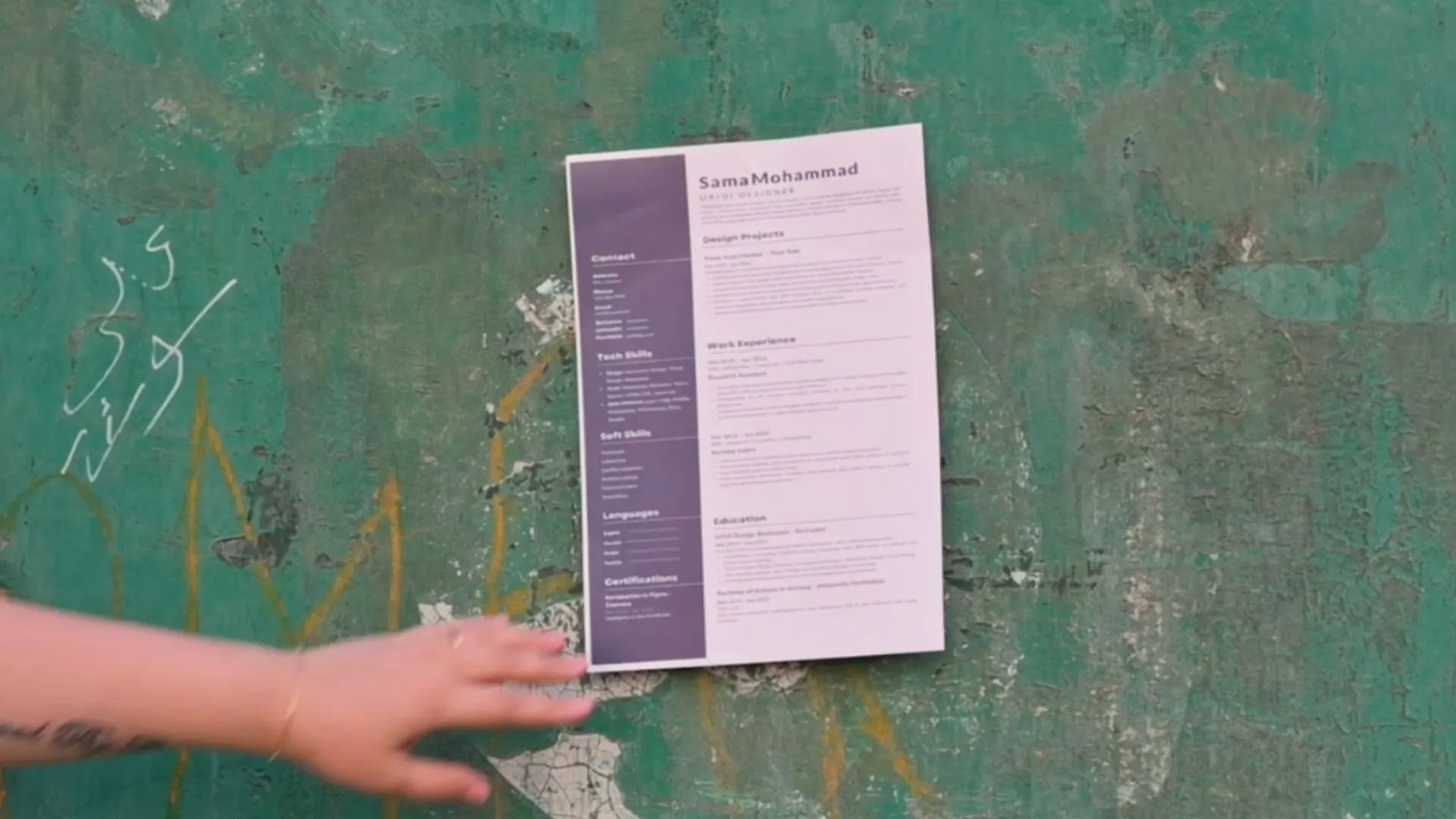How to get a company to read your CV

7
min video //
min read //
July 7, 2023
Job search
CV building
If you're about to hit the job market with some fresh skills and experience, you'll have spent time polishing your CV and making sure that it's error-free. But your CV will only help you land your dream job if seen by the right people.
5 ways to boost your CV's visibility
Submitting your CV to jobs is a great way to get your CV out there. But here, we'll review a few additional steps you can take to boost the visibility of your CV. Let's get into them.
1) Check the application instructions
Your CV won't be helping you if it doesn't get into the hands of the recruiter or hiring manager. That's why before you do anything, check the application instructions! Failure to do so may mean that your CV isn't even seen at all.
Look out for the following:
- CV format: Some companies may prefer PDF, others .docx formats.
- Delivery: Even if the posting is on a job board, the advertisement might specify an application email rather than submitting via the job board.
- Other attachments: Check carefully if the job requires a cover letter, portfolio, or related certifications/credentials.
2)Optimize your CV for ATS
You may have heard rumors about the dreaded ATS (applicant tracking system). In job-seeking mythology, ATS are the equivalent of Cerberus, Hades' three-headed dog that guards the underworld. They are terrifying and the number one barrier between you and the hiring manager.
But let's stop there and remember that this is a myth. While, yes, many companies use ATS, for the most part, the screening functions of these systems are basic. At best, they'll search your CV for keywords related to the role.
So what can you do to optimize your CV for an ATS?
- Add those keywords: When crafting your CV, pay close attention to the job description and identify keywords that reflect the specific skills and requirements employers seek. Sprinkle these keywords naturally throughout your CV to ensure the Applicant Tracking Systems (ATS) spot them.
- Personalize it for each role: Resist the temptation to use a one-size-fits-all CV. Instead, tailor your CV to match the keywords and requirements of each job you apply to. It shows you've taken the time to understand the role and makes you stand out as a serious candidate.
- Keep it clean and simple: Fancy fonts and elaborate designs might be tempting, but they can confuse the ATS and make it harder for your CV to be parsed correctly. Stick to clean, readable fonts like Arial or Times New Roman, and use simple formatting like bullet points and headings.
- Standard sections work best: Make use of familiar section headings like "Work Experience," "Education," and "Skills." These will help the ATS categorize your information accurately. Avoid quirky section titles that might confuse the system.
- Choose file formats wisely: ATS systems generally handle various file formats, but to be safe, go for commonly accepted formats like Microsoft Word (.doc, .docx) or plain text (.txt). Complex file formats may not be compatible with some ATS systems.
- Showcase your skills: Dedicate a section specifically for your skills. Include both technical skills (e.g., programming languages, software proficiency) and soft skills (e.g., communication, teamwork) that are relevant to the tech industry. Make sure to mention skills mentioned in the job description.
- Highlight your tech experience: When describing your work experience, use industry-specific keywords, specific job titles, and tangible achievements that align with the junior tech role you're pursuing. Quantify your results and showcase projects or contributions you've made.
- No jargon left behind: Not all recruiters or ATS systems know every tech abbreviation or acronym. Spell them out when mentioning them for the first time to ensure clarity. For example, instead of just "SEO," write "Search Engine Optimization (SEO)."
- Double-check for errors: It's crucial to proofread your CV to eliminate typos, grammatical mistakes, or formatting errors. Silly mistakes can undermine your credibility, so take the time to review your CV thoroughly before submitting it.
By optimizing your CV for ATS, you'll increase your chances of it getting seen by both the recruiter and hiring manager. If you have doubts about whether it's been received, you can always send a brief but polite message to the recruiter responsible for the role.
3) Add your CV to your professional profiles
In the job hunt process, you'll probably have invested time and energy into polishing your LinkedIn, Behance, or GitHub profiles (and if you haven't, this is your hint!). Why not add your CV as a link in your online profile? You never know when a recruiter might just stumble across your profile.
How to create a link for your CV
- Create an account with Google Drive or Dropbox
- Upload your most recent CV
- Update the sharing settings for public access
- Generate the link and add it to your profile
By adding a link to your profiles, recruiters and hiring managers can dive into your core professional skills and experiences in depth if they come across your profile. This can be especially nice on platforms like Behance and GitHub where they can also see the quality of your work.
4) Use online job boards and networks
Sending your CV to specific roles is a good way to start getting some eyes on your CV. But if you want to increase its visibility, adding it to job boards and professional networks can be a great additional step.
Depending on the job board, some online platforms offer an open application. This way companies who advertise on those platforms can review the list of pre-submitted CVs first. Others may encourage you to upload your CV to your profile so that when a job does become available, you have an easier application process since your CV is already there.
(Psst, if you are looking for remote jobs, here's a good place to start!)
Additionally, you may want to explore local professional networks. Often open jobs are shared in these networks, sometimes before they're even released publicly. Depending on the admin rules, you might even consider posting your CV to these groups in case of any relevant opportunities.
5) Follow up on your application
If a recruiter or hiring manager is actively hiring, they're probably busy! It's easy for even the best CVs to get lost in the hustle and bustle of hiring. A polite message to the hiring manager or recruiter can go a long way.
Here's the format we suggest, though customize it to suit your tone!
Dear [insert name]: I wanted to follow up on my recent submission of my CV for the [job title] position at [Company]. I am excited about the opportunity to contribute my [specific skills/experience] to your team. I would welcome the chance to discuss how my qualifications align with the role in more detail. Thank you for considering my application, and I look forward to hearing from you.
You may decide to send it immediately after or after a few days. But keep it to one follow-up unless you hear back from the hiring party to avoid appearing spammy.
Bonus tip: Persevere
In this dynamic and ever-evolving industry, the competition can be tough, but don't let that deter you. You possess a unique blend of passion, creativity, and problem-solving skills that make you a valuable asset. Embrace your potential and craft a CV that showcases your technical expertise, projects, and enthusiasm for learning. Let your passion shine through, highlight your achievements, and tailor your CV to each opportunity.
Once you have this, it might only need a small push forward to get into the hands of the right person. So don't give up. We know you got this.
Table of content






.svg)
.svg)




.svg)